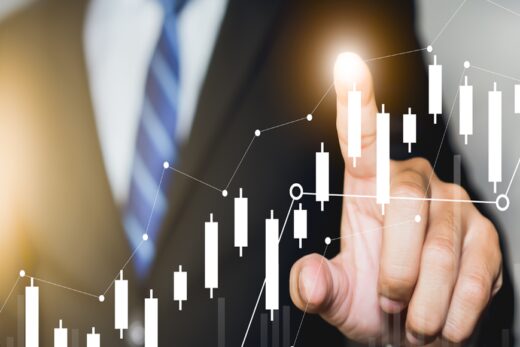For an investor, the returns in May have been more than satisfactory. Why do you think this market is not reacting to what is happening in the economy? It is true that markets are forward looking but are they getting complacent?
There is no doubt that despite the local lockdowns, the steps taken by the government proactively in the last one month, will address some of the issues. Secondly, the ministry of finance has come out with some measures to ensure that the economic growth does not get impacted, the lending activity does not get impacted in the needy sectors. On the basis of this, clearly the market still looks at the way forward and expects pent-up demand, economic growth to come back, given the fact that the vaccination drive has been going on very fast.
Also, the number of cases getting reported across various states have started coming down quite significantly. All that gives a signal that April was relatively unexpected by any standard but having done that, the steps taken by the government in a variety of manners is bringing back confidence. At the same time, repeatedly, despite inflation being in an uncertain zone, the US Fed governors as well as global central bankers have reiterated multiple times that the low interest rate regime will continue until we see a decisive trend coming back on the growth path.
So, it has more to do with confidence being given by the system as a whole and also the expected pent up demand once the economy is back on path to normalcy. We saw this last year around July, August and September whenever there was a significant pick-up in the economy. A similar trend this time would probably be long lasting and that is what the market is looking at and that is why the breadth in the market has been increasing.
But the difference between the first wave and the second wave lies in the intensity of the impact, the number of lives lost and what it could do to the rural population. How come markets are not noticing that?
While the second wave is much worse than the first wave, for the first time, economic activities are getting disconnected. There are many things that are unknown. People do not know how to react and therefore from the policy making point of view or from the economical revival point of view and even from a consumer demand point of view, this time while the number of instances reported is quite high, at the same time the number of people have actually understood the seriousness of the whole matter and are respecting the lockdown more seriously. At the same time, economic activities are not getting completely derailed given that in the last one year, things got a little adjusted as to how the economy has to run.
My belief is it is working quite well and even the rural economy. Except for a few parts of the country, the rural economy is not driven only by fear and the other stuff. The agriculture economy has to get prepared for the forthcoming monsoon season. Business goes on as usual despite the rural economy getting impacted.
Secondly, the government initiatives in pumping money in the hands of the people and the rural economy, in the form of fertiliser subsidy and other things, also has ensured that people do not suffer for want of money. As things come back to normal, there will be large pools of savings as in the US. The savings rates have gone up quite substantially and the money lying in the bank account could be relatively higher compared to what one would have seen a year back.
That money would lead to spending habits changes and these are some of the things I believe are driving the market. Given the fact that the GST collections have been growing continuously, I would say the trades are not getting impacted given that the operation methodologies are also undergoing a change.
We see financialisation as the broader theme for India as an economy, but with recovery, what kind of interest or opportunity do you see across some of the financial names? Where is the maximum opportunity within the space?
In the financial services industry, look at how some of the big banks have been reporting their numbers post pandemic. Everyone has gone very conservative in terms of making provisions a little ahead of time and also for an extended period of time which was given in the form of a moratorium. People are actually looking at repaying as and when they get money rather than actually looking at defaulting. The moratorium as given by the government has changed the whole mindset of the people. Paying is more about intention. The numbers reported by the lead banks in the last three weeks reflect that the issues relating to NPA provisioning are coming down. On the contrary, some of the resolution that has happened in the last few years has actually helped the banks in terms of writing back and then thirdly, given the fact that the pandemic had worried a lot of people, most of the banks are well capitalised and therefore no need to fear about lack of capital in case lending growth comes back.
I think the balance sheets of most of the banks have become much stronger. At the same time, the NPA levels are not as high as what people worry about. Broadly, the financial system today is much stronger than what we have seen in the past. Also something is coming in the way of some kind of booster. As things get better and credit scorecard comes back, most of them are well prepared to meet the credit demand growth that will come back.
Credit demand growth is not coming back given the fact that most of the companies are still not aggressive in terms of building capex. The consumers are still not aggressive in terms of borrowing and investing. We see that coming in and the financial system remaining resilient and robust.
What about discretionary demand? Covid 2.0 has been worse than the first wave and this time we have seen a bit more impact on spending and eating into savings?
April-end and May were a little worse than the previous month. At the same time, if a strict lockdown comes in, from the consumer point of view, there will definitely be some worry and spending may get postponed. But one thing that has happened in the last one, one-and-a-half years is a worldwide phenomenon. Along with the high liquidity, the lockdown and a work-from-home model definitely will become even more prevalent in the middle class population. That has led to increased savings which eventually will have to come to the market, resulting from increase in the consumption — be it with respect to travel or with respect to the spending on their household items or maybe refurbishing the house. All that started happening quite aggressively during the second half of the last financial year. We would do such things this year also. Even the two-wheeler sales picked up quite nicely for about four-five months. I would expect consumer sentiment to come back once things normalise over the next three-four months.
ET Now: Besides consumption and banks, metals have also pushed the market forward from the last peak back in February until now. Where do you stand when it comes to metals? Is there still headroom going forward or is the best already behind us?
A Balasubramanian: Structurally the commodity cycles seems to be coming back a)on the back of a significant progress made by most of the global economies, especially China, in terms of cutting down supply. The whole demand has also contracted and therefore the whole supply demand equation has become neutral.
At the same time, it also brought in price stability from the producers point of view. The way iron ore and steel prices have gone up, indicates some bit of industrial activities are coming back. While the rise has been quite sharp given the fact that it has been led by Chinese demand going up and post the US announcement of almost $6 trillion second stimulus.
In the next two years, we will see the capital sectors coming back given that most of the economies are now going to spend big time money in building the infrastructure and maybe spend money on various infrastructure needs. If that is going to be the case, we will probably see metals as an industry get into some kind of cyclical correction. But we will probably see a bit of long run momentum positive for the metals as a sector given the fact that industrial activity is also coming back gradually.
The biggest spenders are the various governments which have become very aggressive in terms of spending towards infrastructure, unlike the first lockdown when it was more about giving money in the hands of people. The second lockdown seems to have made people realise that spending money on economic recovery is most critical and that is coming.
Also, I am told that a lot of demand for some of the metals is coming from electric vehicles and other various industrial activities. All such things should see the metal rally being more sustainable in the long run. It may go through a short term volatility which is bound to be there having seen such a significant rise in the last few months.
What about the entire agri commodity theme?
It is very difficult to comment on the agri commodities given the sensitivity to inflation and also the farm producers. Both have to be balanced very appropriately. Therefore we see government intervention, subsidising some of the prices in the interest of controlling inflation as well as consumer demand. For the last few years, the Indian government has been attempting to increase the income in the hands of agriculturists. Various steps have been taken including price rise and all that would have some impact from the producers point of view. But at the end of the day, agri being a commodity, one needs to have a right balance between the price rise as well as consumer demand.
The kind of bull run that we are seeing in the metal and other commodity prices probably cannot happen in this segment in a sustainable manner. We may see temporarily, one crop getting affected and prices shooting up. Unless we see a continuous drought kind of a situation, in the agri commodities space, one cannot expect the price to remain too high for too long a period of time. So what we are seeing is definitely temporary.
In the case of sugar, especially in the Indian case with ethanol price being one of the things being increased. Sugar manufacturing companies even use it for other purposes given the fact that oil prices have been rising and therefore they get better realisation in that space.
In the power sector also, they make huge spending given that the sector has gone through consolidation. Better realisation coming from this segment would also have a positive impact on some of these companies. Given the sensitivity attached to it from an inflation point of view, a big question mark would remain on how farthe government allows food prices to go up.
What would be your investment advice?
Rich is the function of how you want to define yourself. For a common investor, as the economy is going to bounce back and given that interest rates are going to stay low for a considerable period of time, the best way to invest would be through a mutual fund with a good mix of the funds focussed on multicap categories or small and midcap categories as long as he is ready to stay invested for a 5-10-year period.
An investor feels rich if he feels he has more than what others have. In order to make that happen and make his money work on a continuous basis, it is best to invest via mutual funds.
Mutual funds provide a diversified portfolio, takes away the worry of too much concentration and at the same time helps one build a very strong portfolio for the longer term investing concept. Being part of the mutual fund for a number of years having multiple cycles is the best way to make investments work for you through the mutual fund model.



